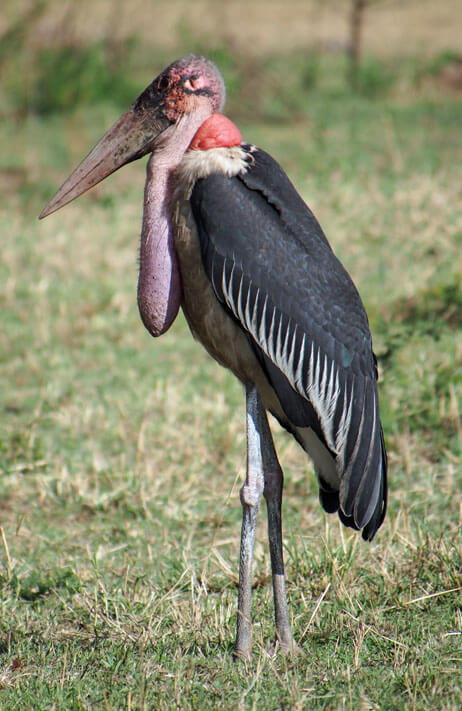“The great migration” is done primarily by millions of wildebeests between Kenya and Tanzania. In February they are in south Serengeti, grazing and giving birth to calves. In May, when the rains end, they start heading northwest, reaching the Maru river in July and August.
We were there to watch the river crossing – it’s actually not “the” crossing, it was a series of crossings. It’s a dramatic, and dangerous event (crocodiles, lions), and for some reason they do it a lot. (Even sometimes going across in the morning, then returning in the evening.) We saw four crossings.
We got up early and drove to the river.

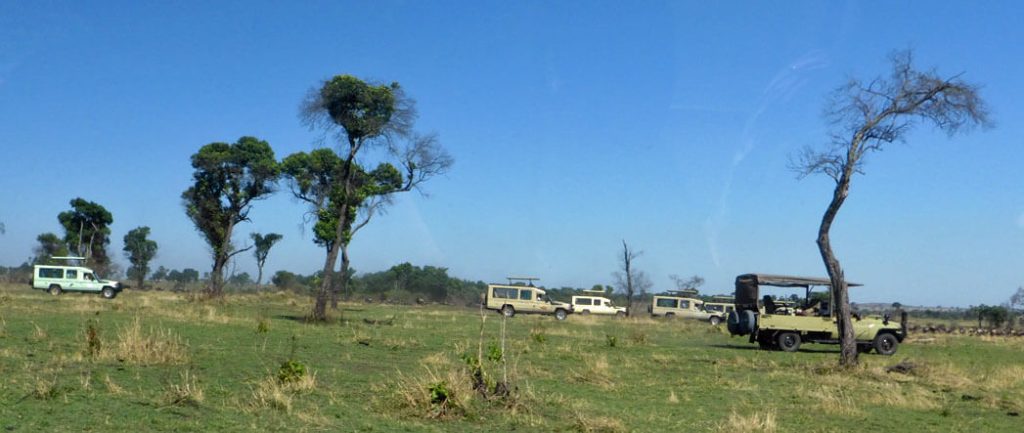
We had to wait away from the river, so as not to bother the wildebeests. They gathered and bunched up and nervously shuffled about. They would then pull back and start heading to a different crossing, then head back. Jamal said as soon as one touched the water they would all go.
We waited three hours.
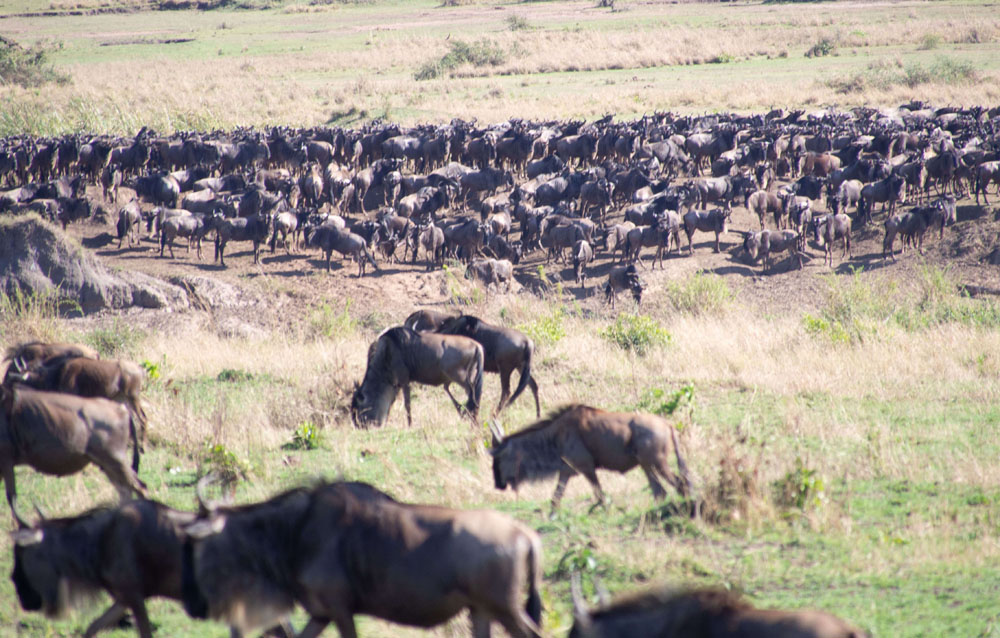
Suddenly, they started across. The cars raced forward and got to the edge of the river.
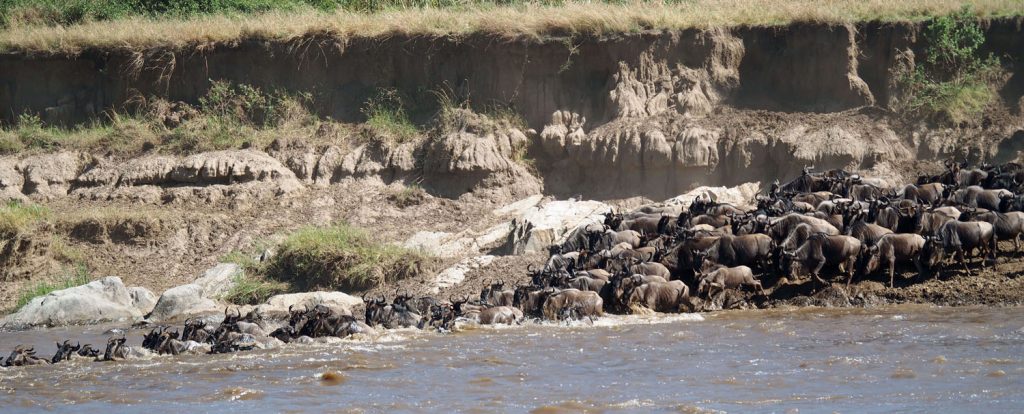
We were lucky to have parked at the point where the wildebeests ran up the bank after coming across.
They raced past our jeep and headed to graze.
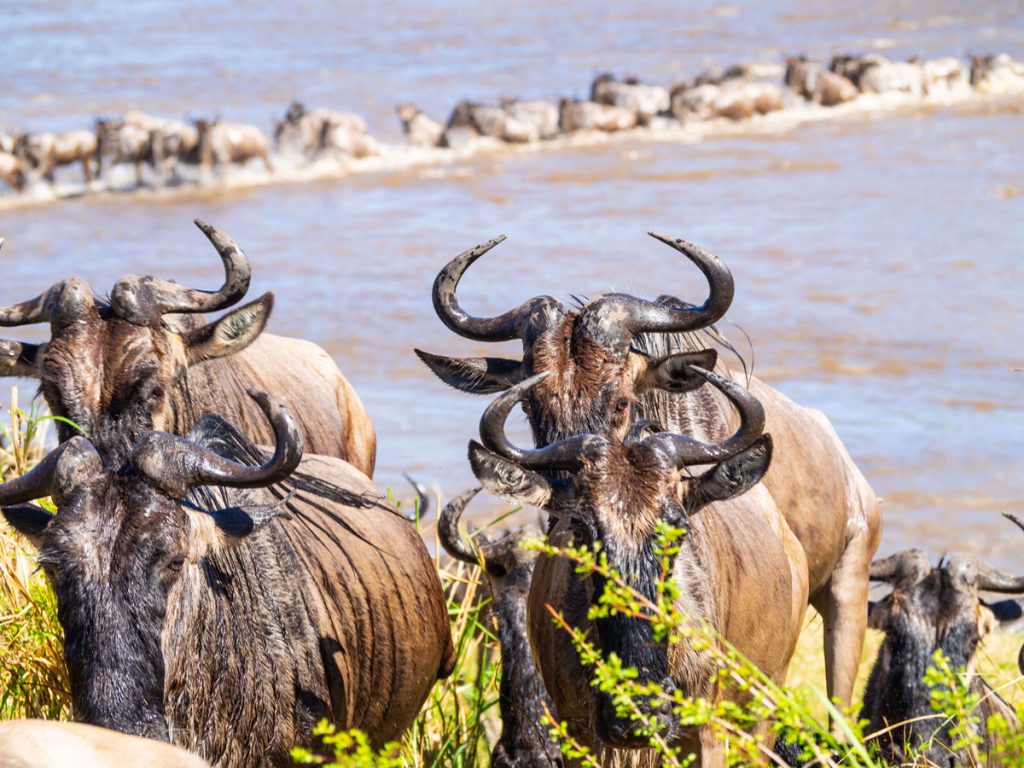
The crossing was going smoothly for the wildebeests, but then the crocodile approached.
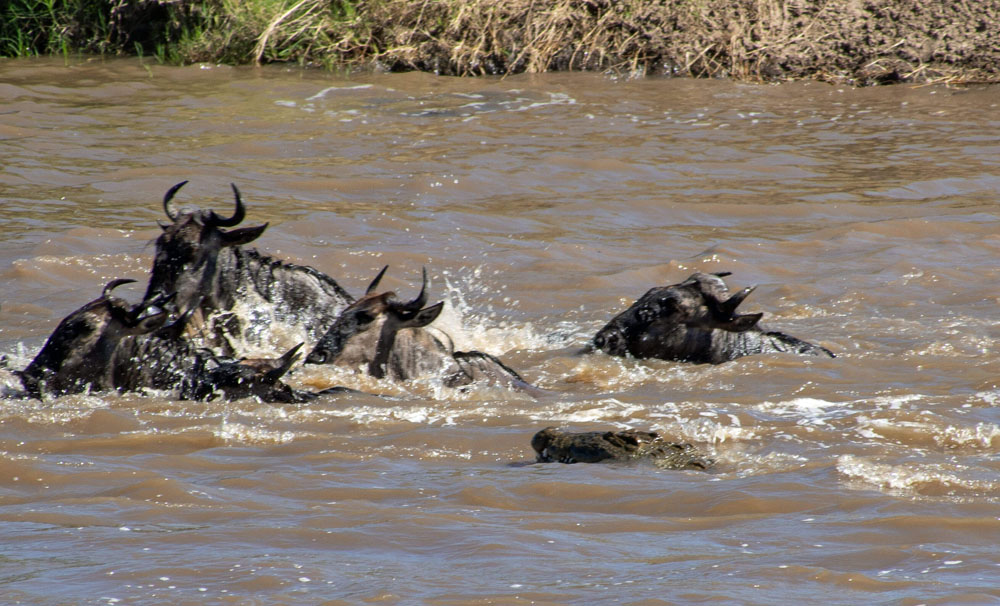
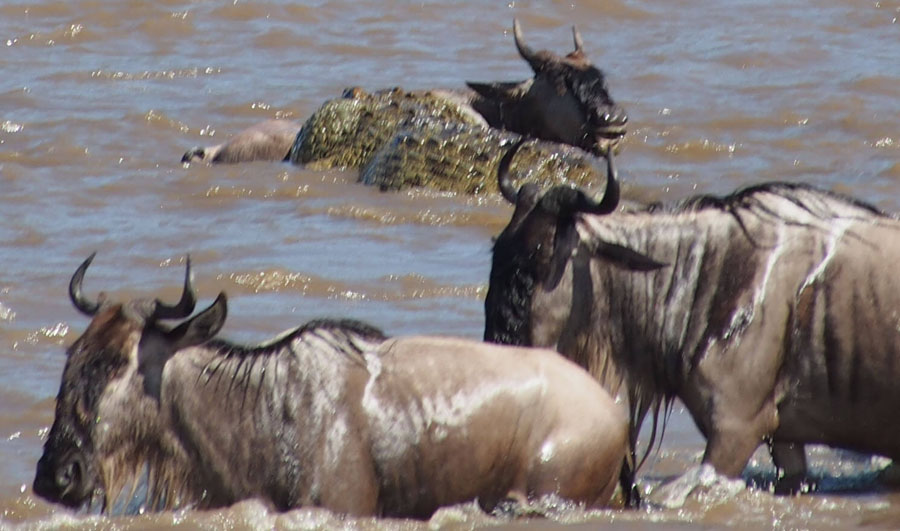
It quickly grabbed a baby and pulled it down.
We saw one other crocodile kill – and several very fat, contented crocodiles who had clearly had their fill earlier. Wildebeests also died by injuring themselves jumping down to the water, or were exhausted and caught by lions. Wikipedia says about 250,000 wildebeests die during the journey.
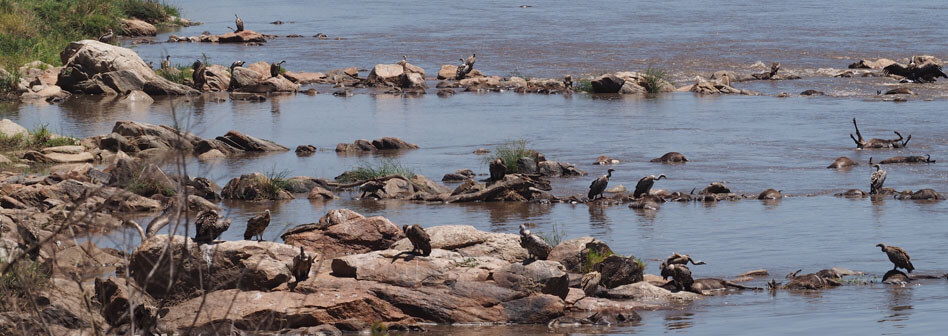
We saw three other crossings.
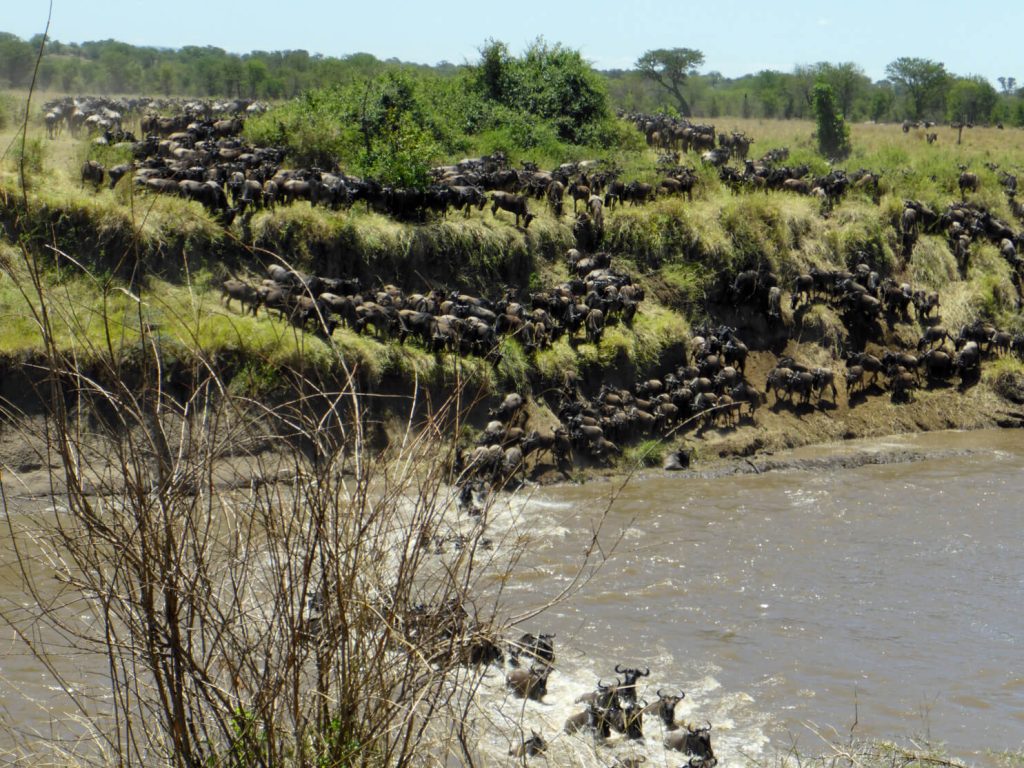
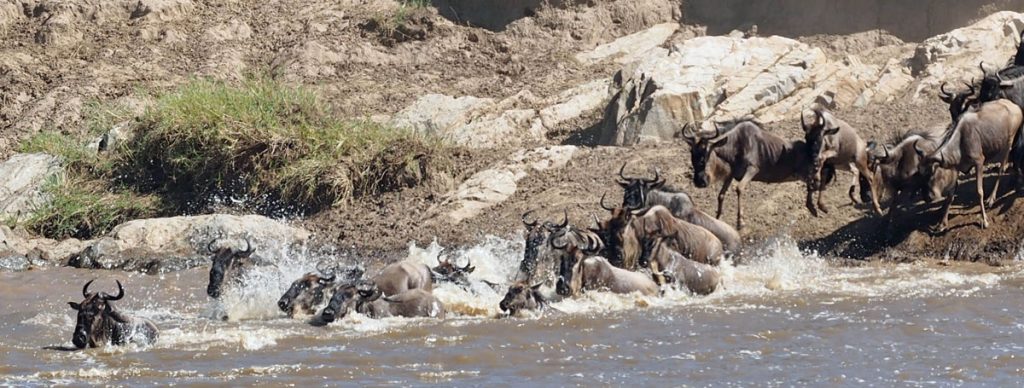
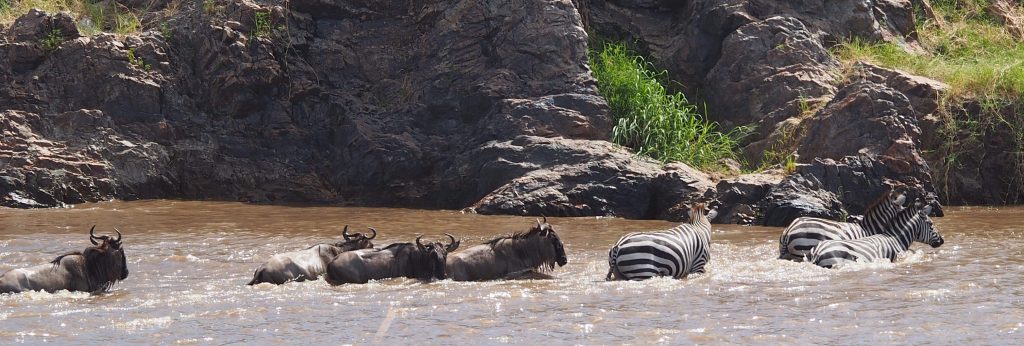
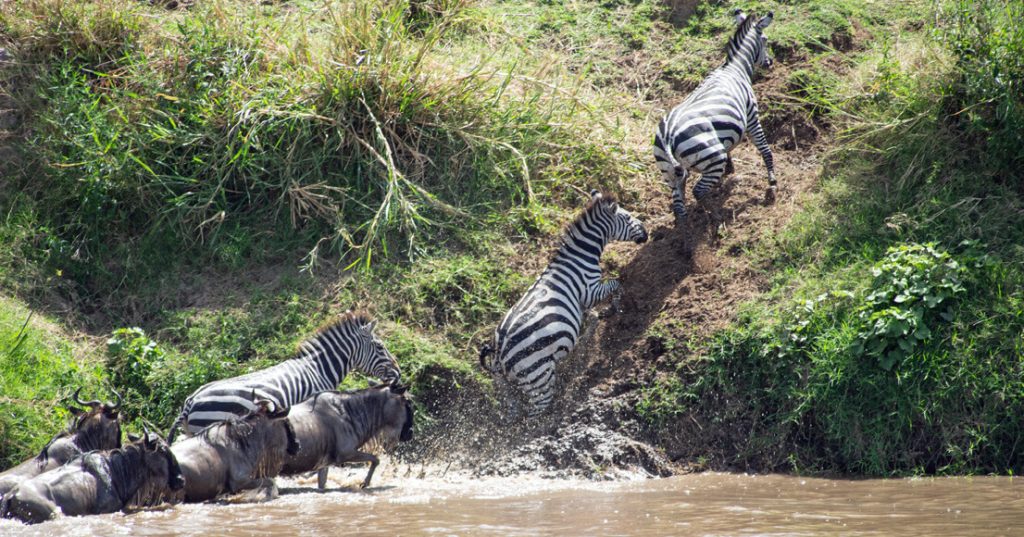

This was our last day of our safari, so we drove around a bit.

